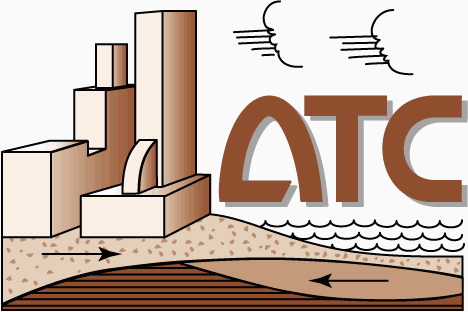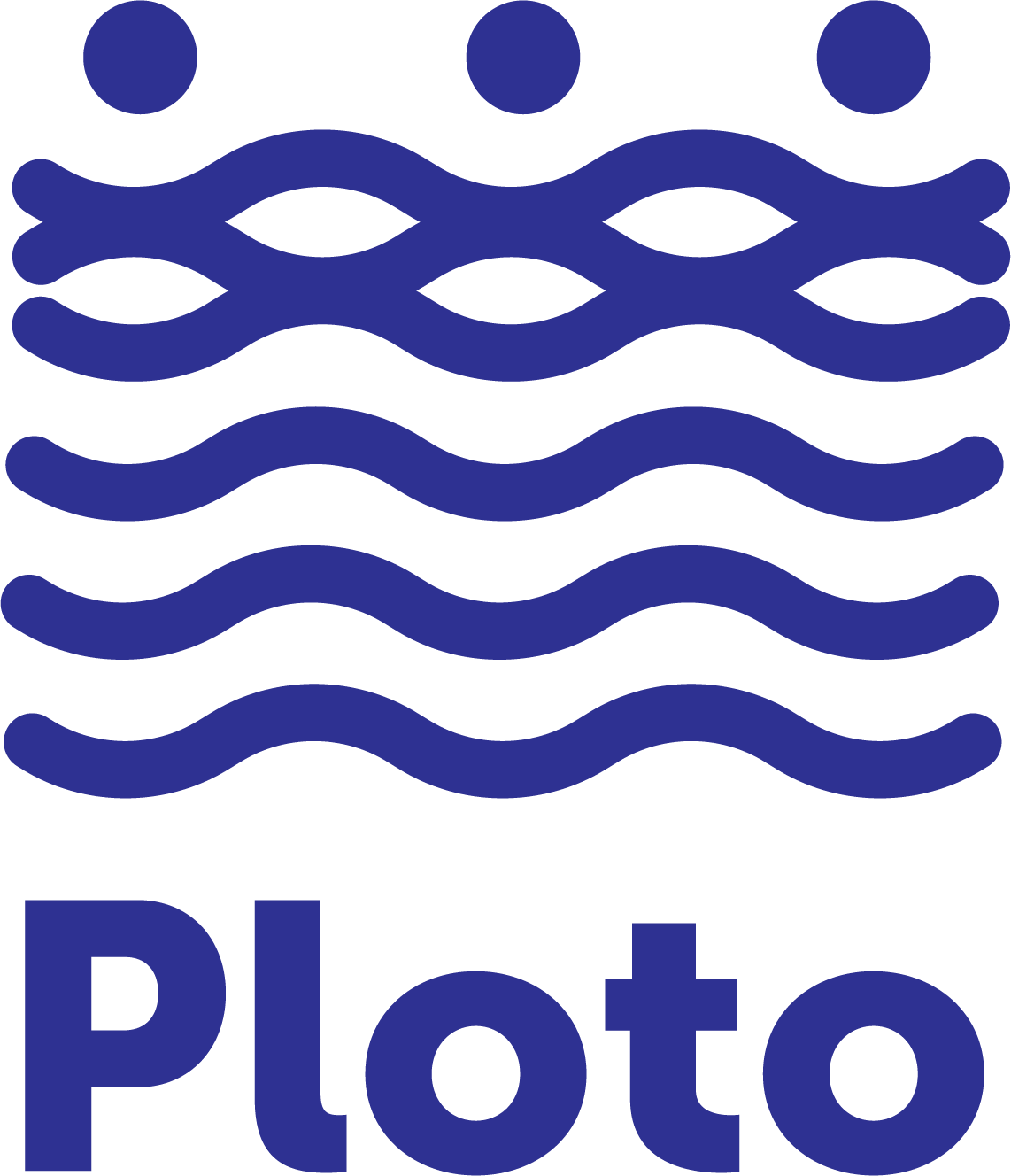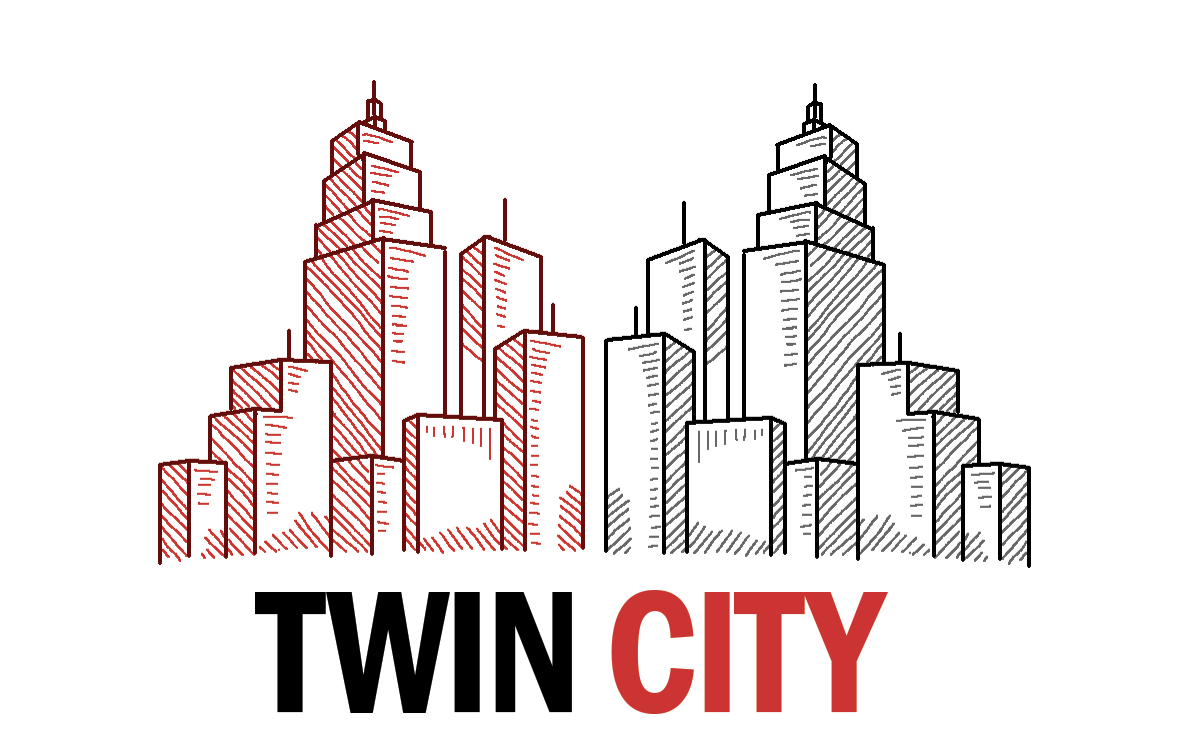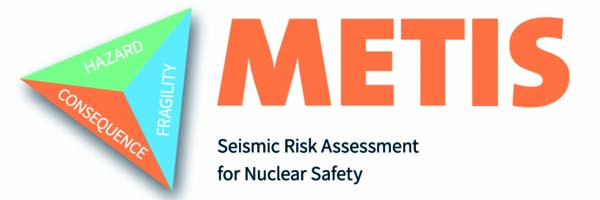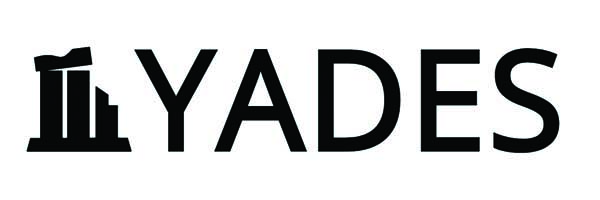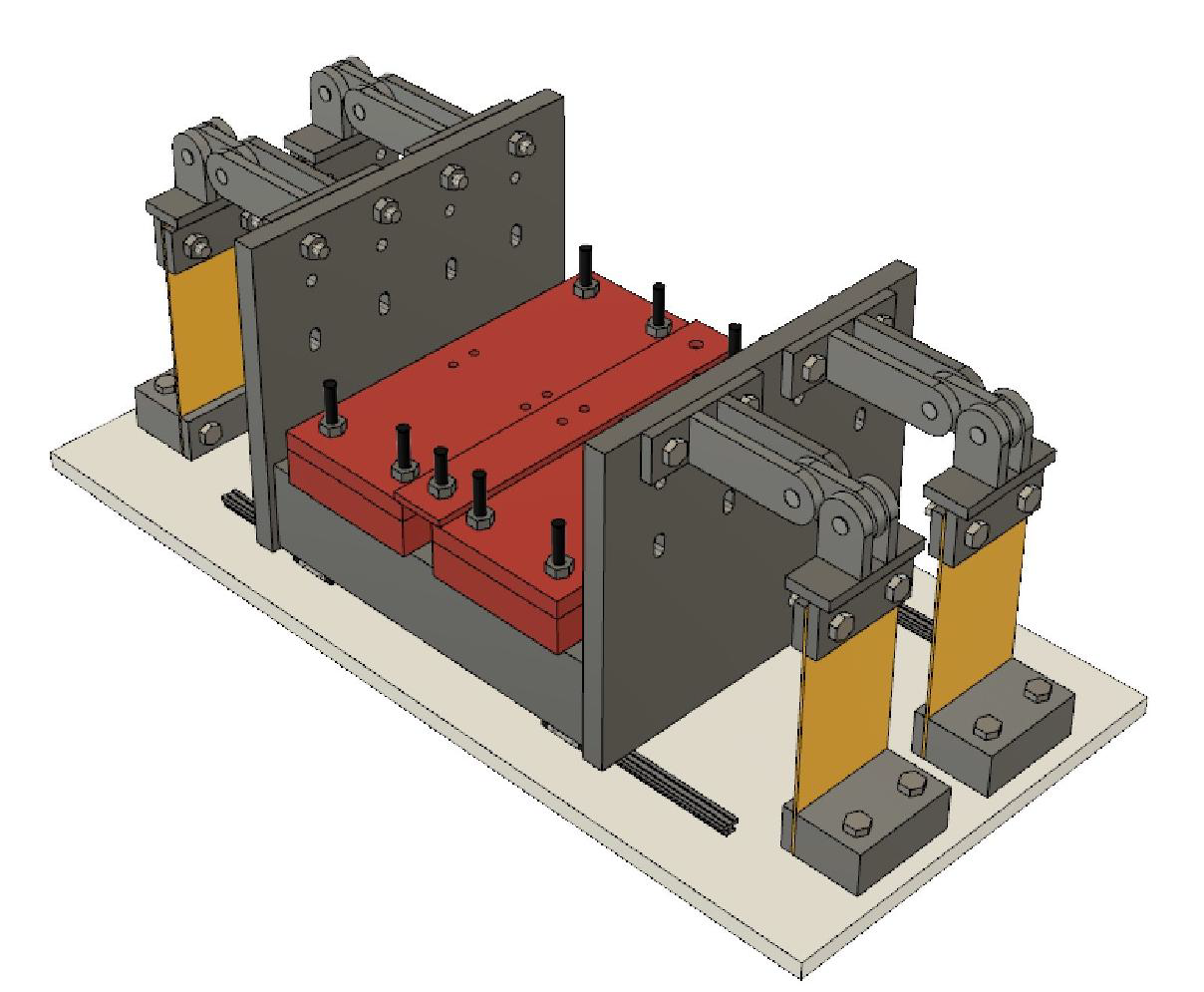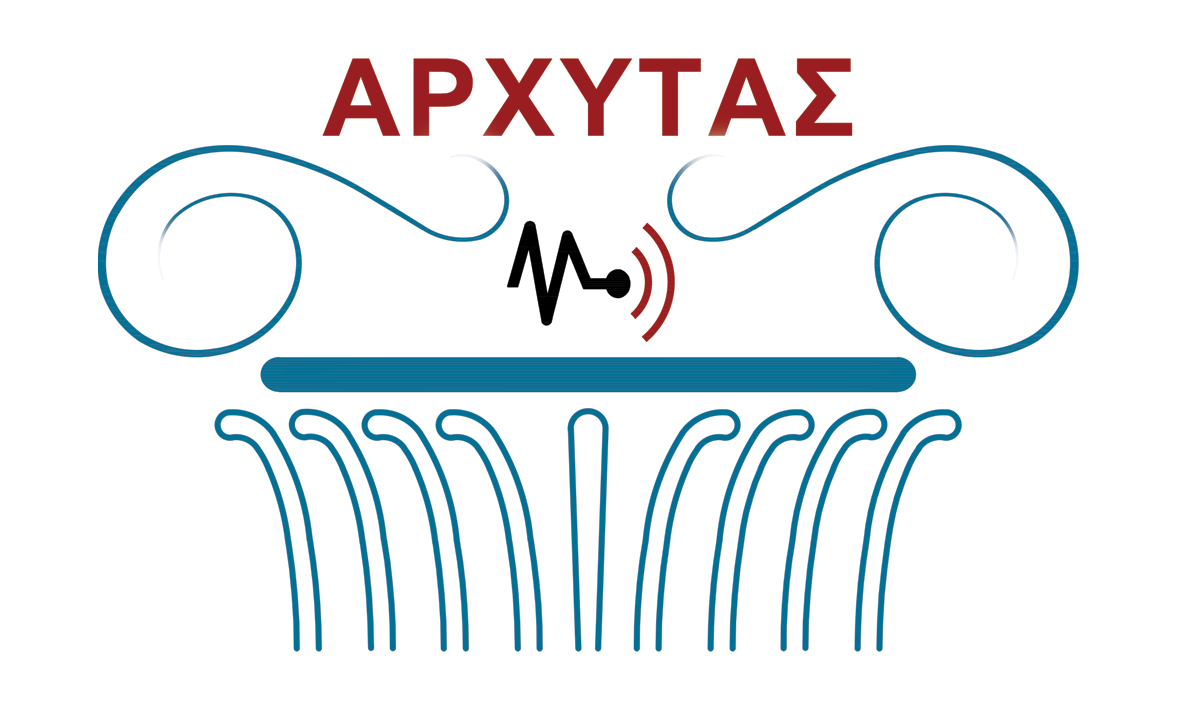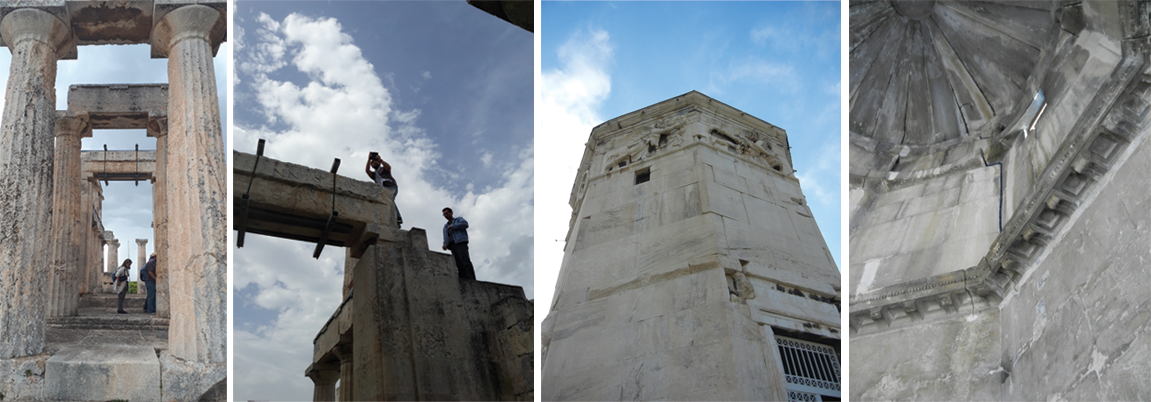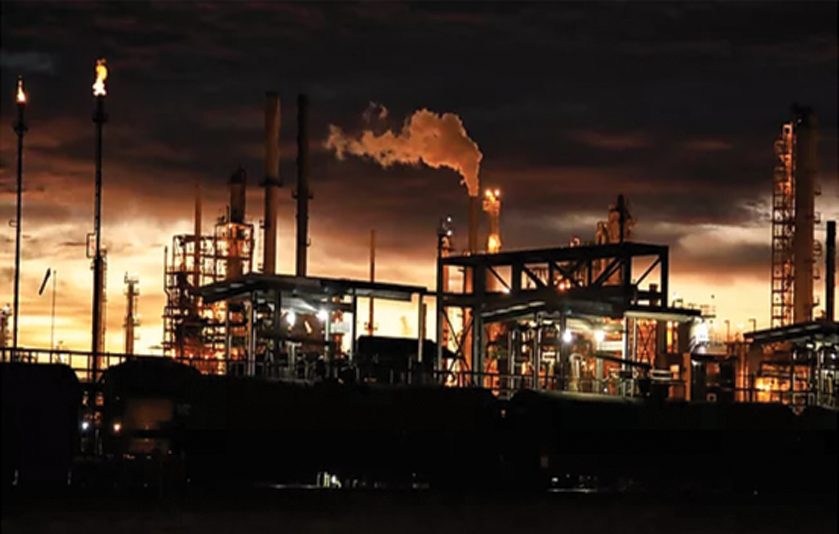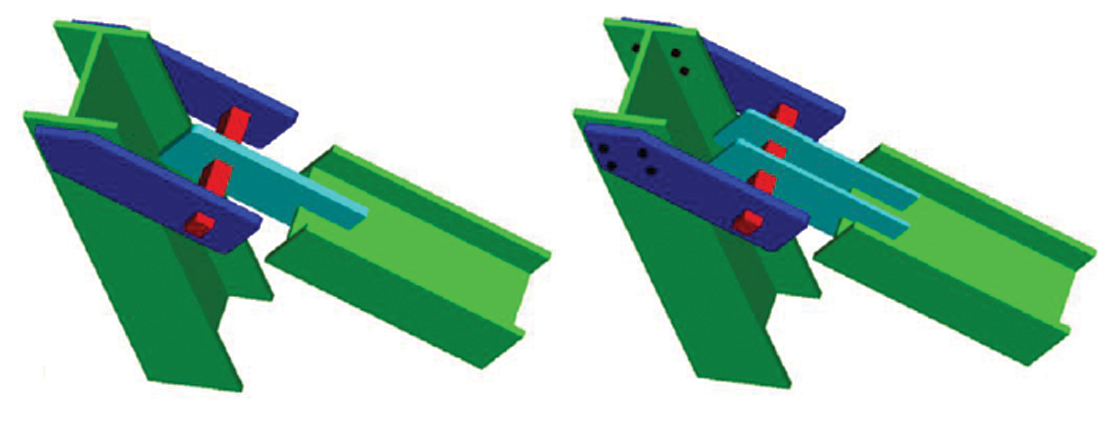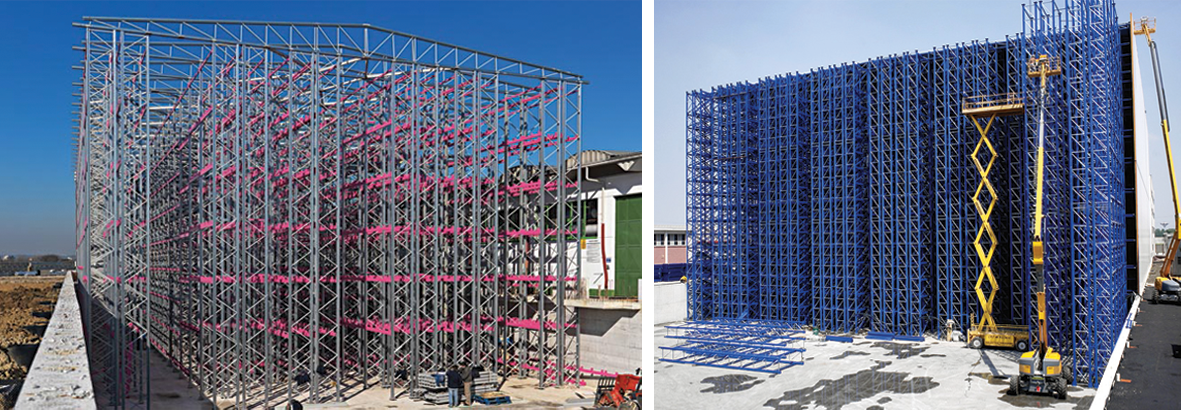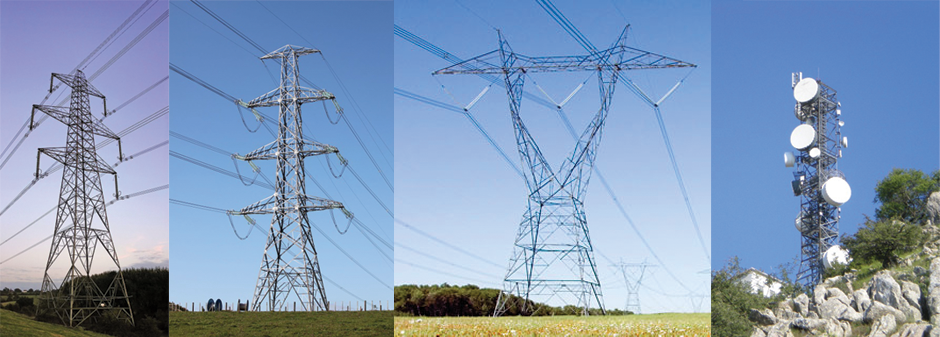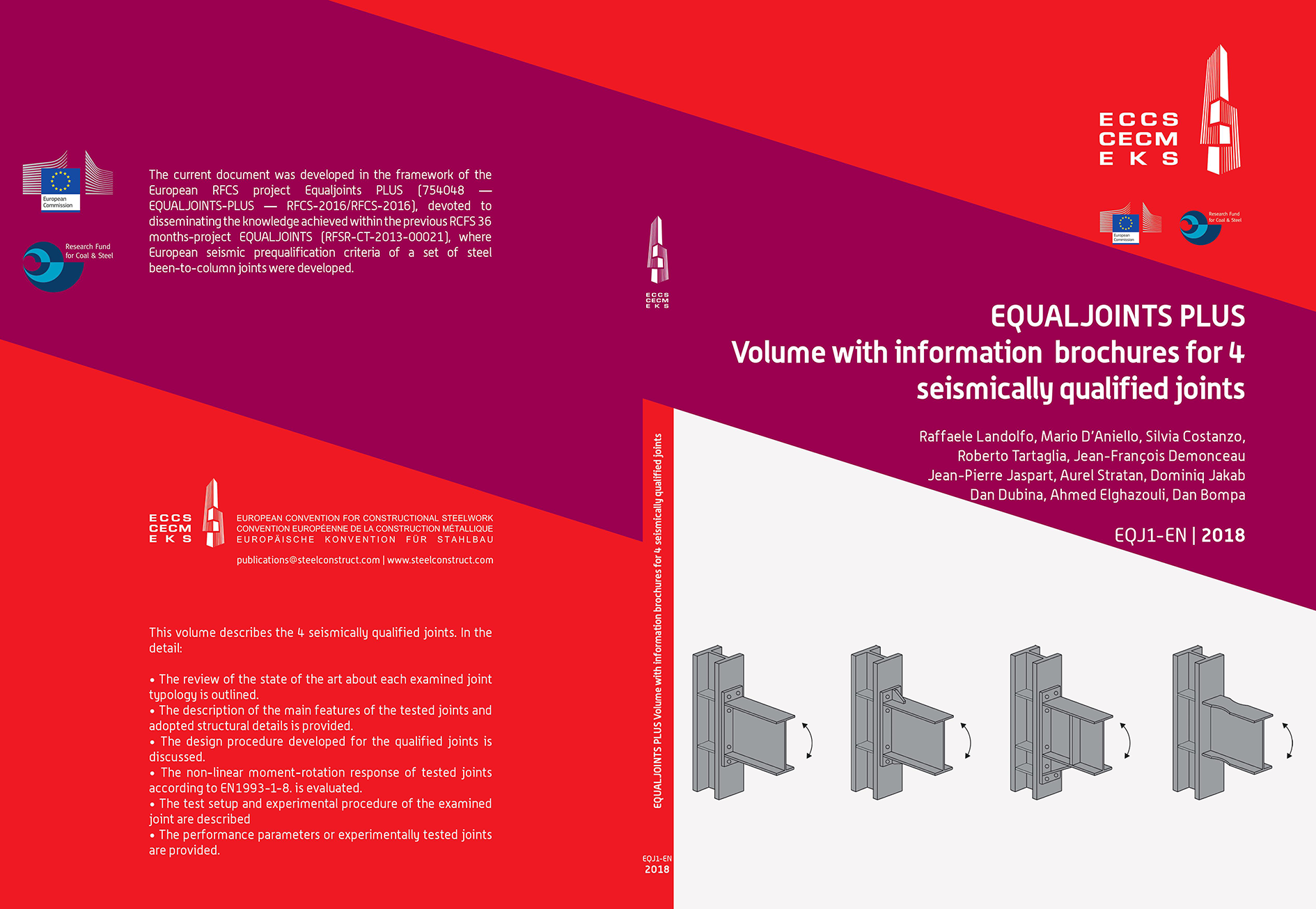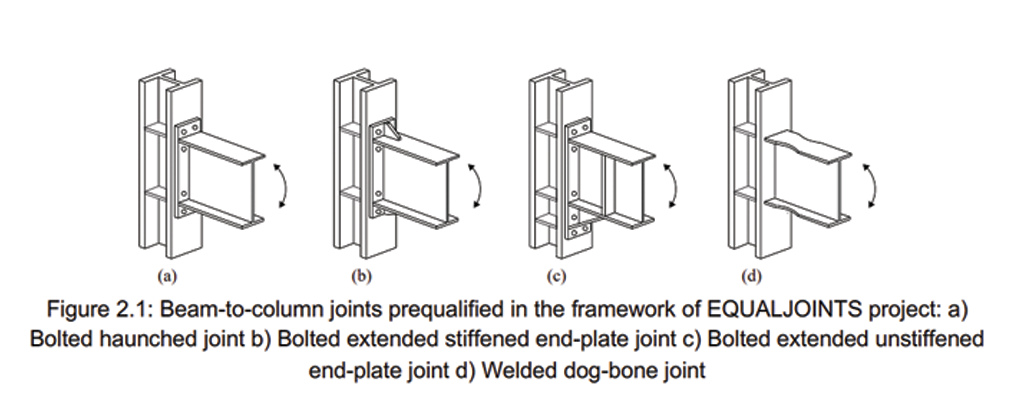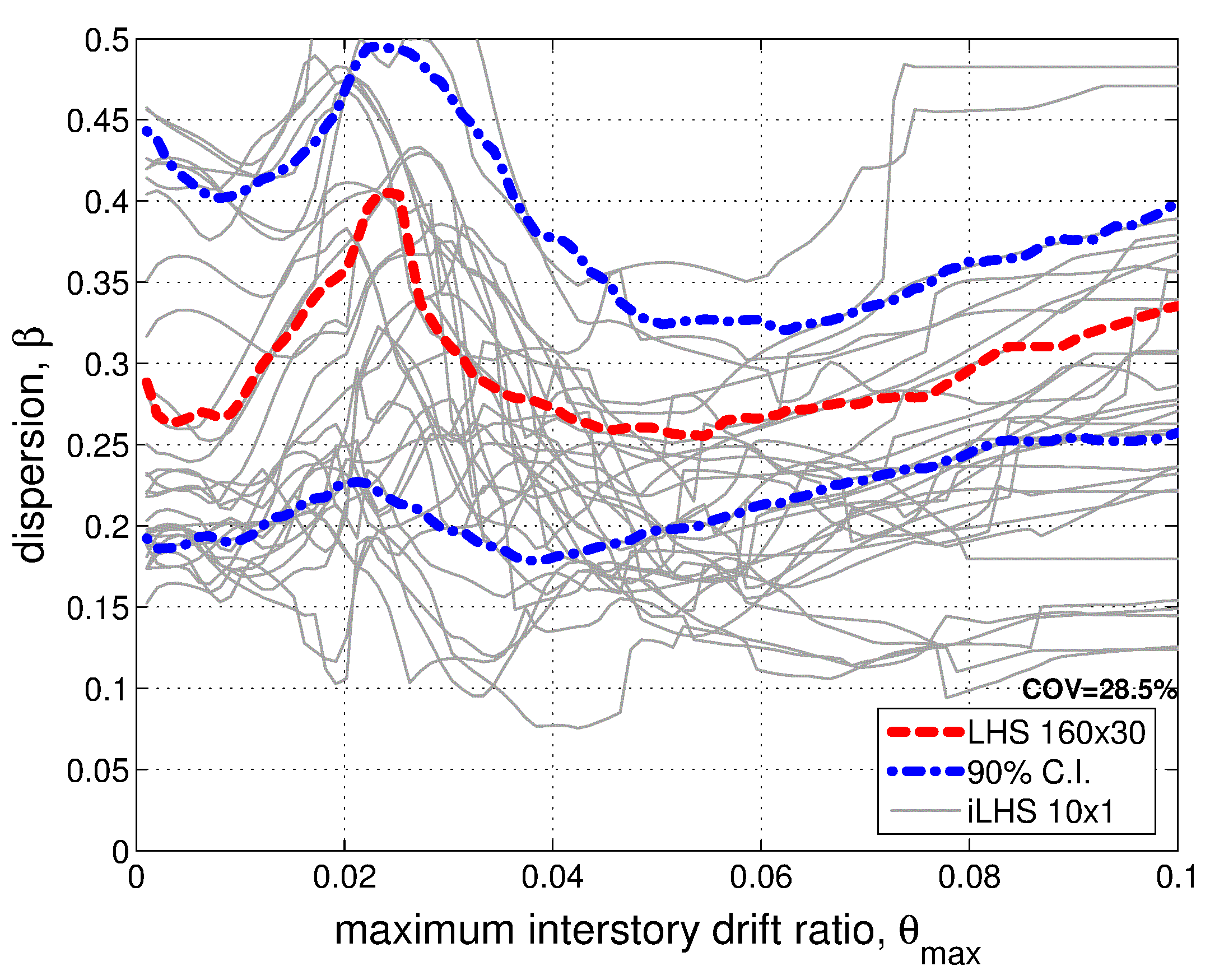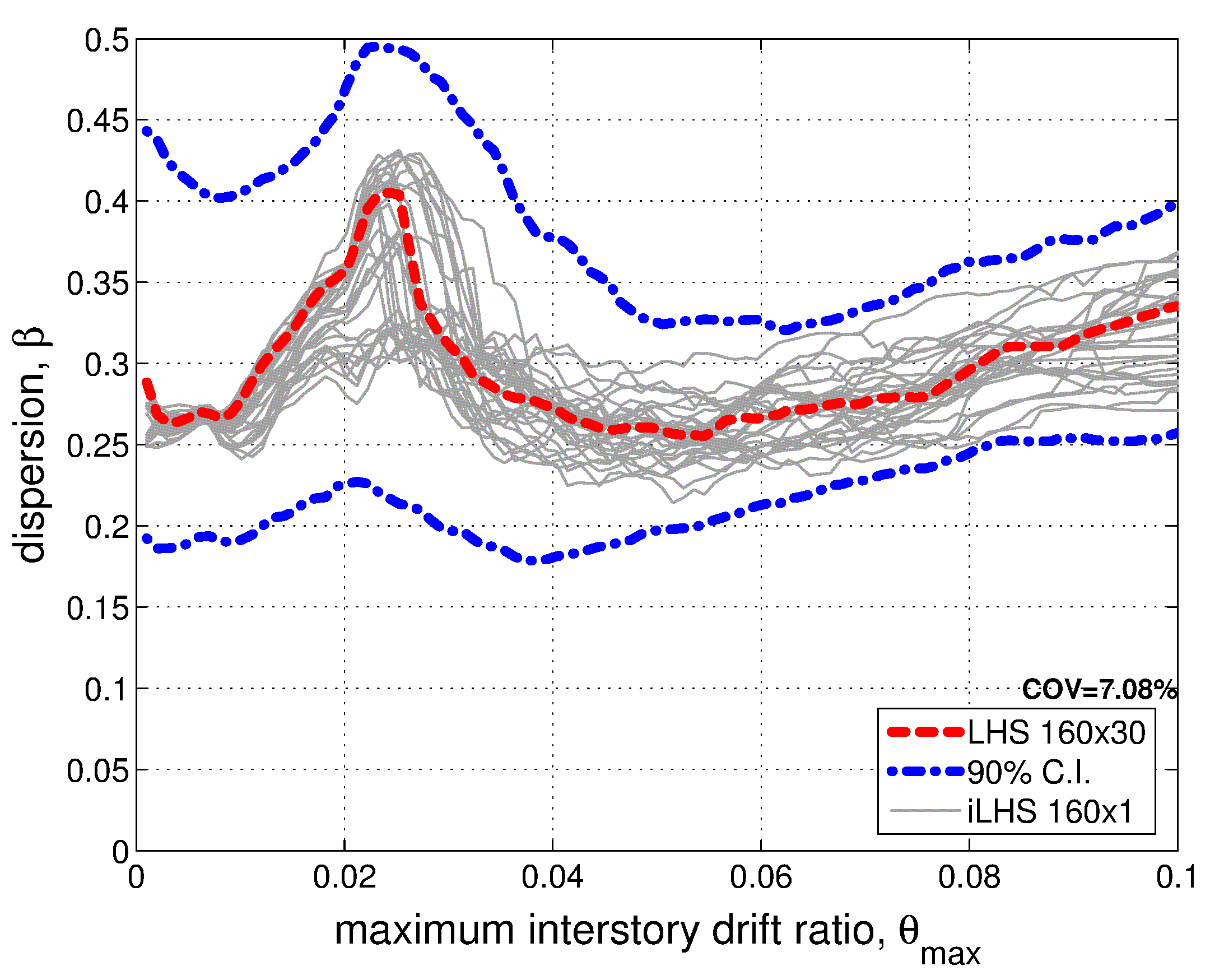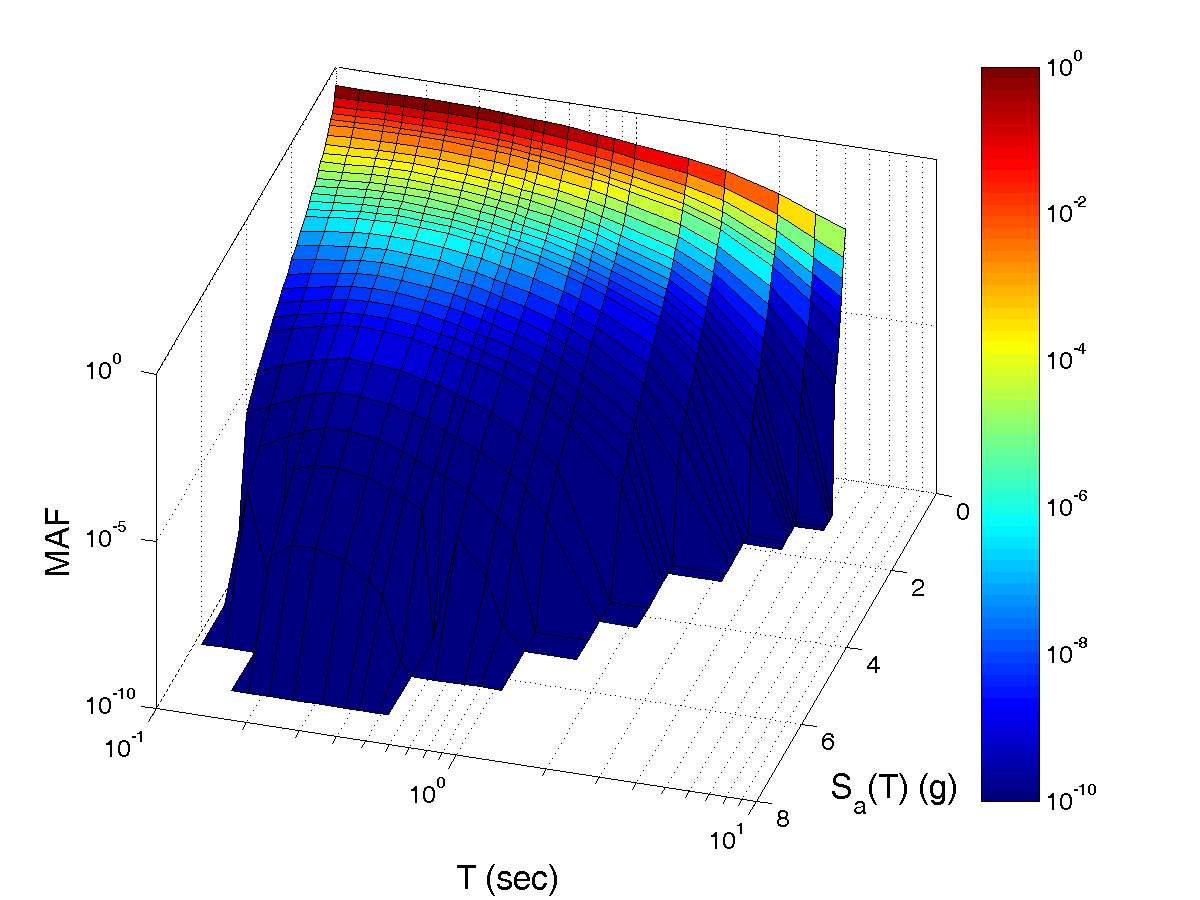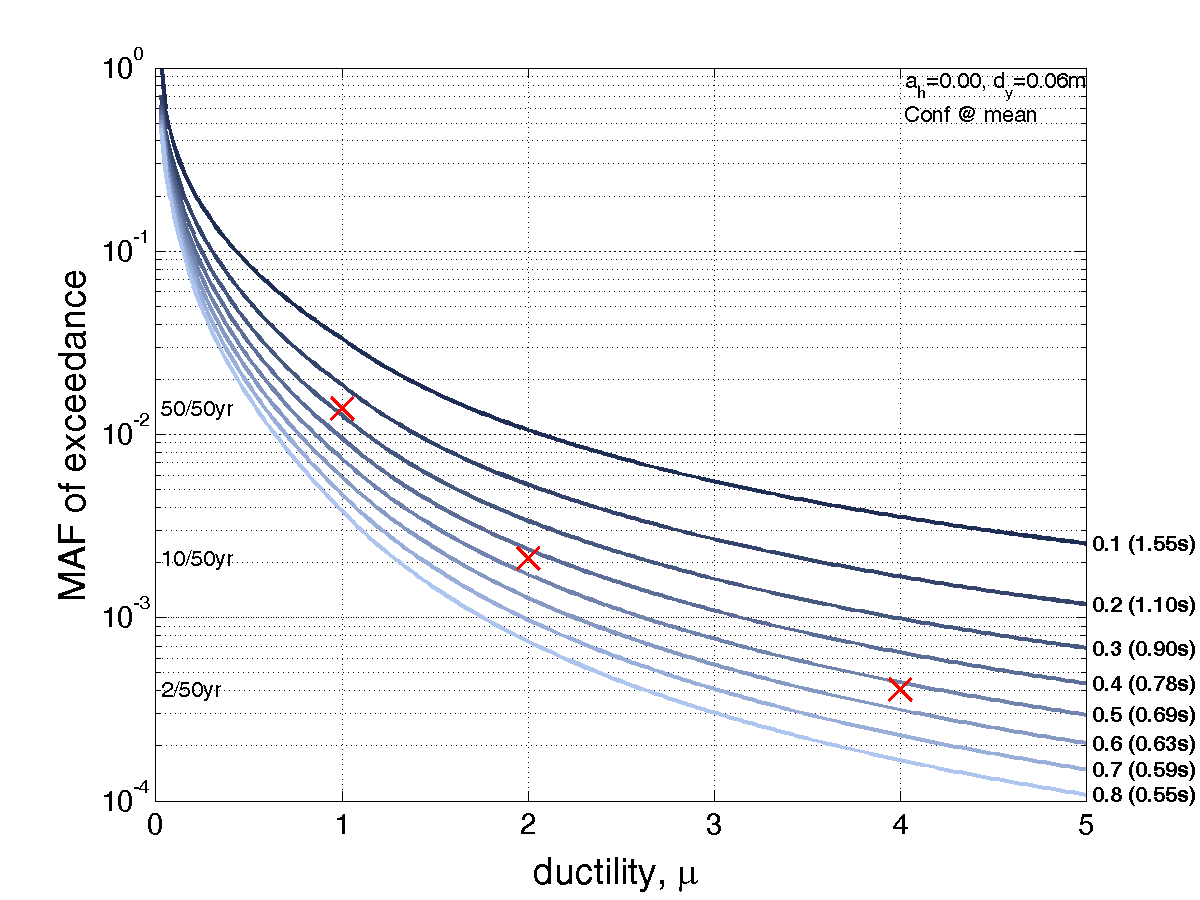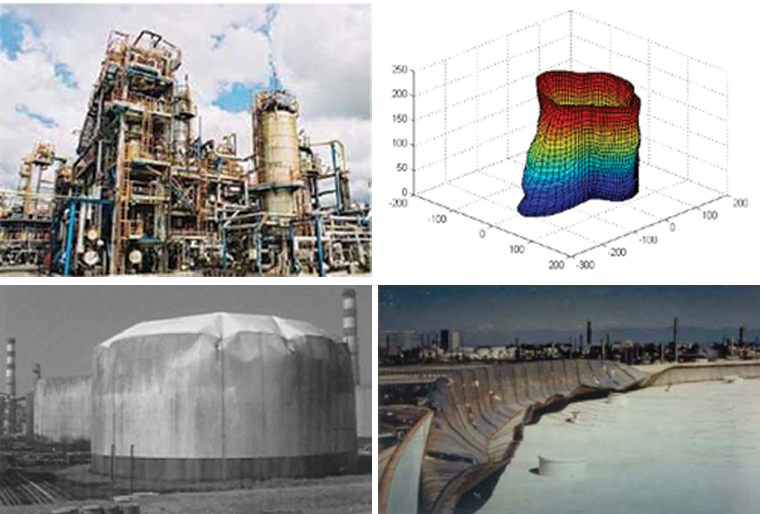
Projects
 |
|
| RC Book—Design of Reinforced Concrete Buildings for Seismic performance | |
| Title |
Design of Reinforced Concrete Buildings for Seismic performance: Practical, deterministic and probabilistic approaches |
| Authors |
M.Aschheim, Santa Clara University, CA E.Hernandez-Montes, University of Granada, Spain D.Vamvatsikos, NTU Athens |
| Publisher | CRC Press, 2019 |
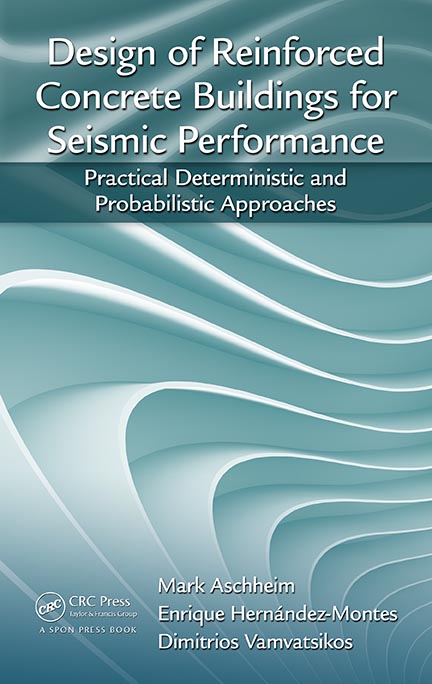
|
The costs of inadequate earthquake engineering are huge, especially for reinforced concrete buildings.
This book presents the principles of earthquake-resistant structural engineering, and uses the latest tools
and techniques to give practical design guidance to address single or multiple seismic performance levels.
It presents an elegant, simple and theoretically coherent design framework. Required strength is determined on the basis of an estimated yield displacement and desired limits of system ductility and drift demands. A simple deterministic approach is presented along with its elaboration into a probabilistic treatment that allows for design to limit annual probabilities of failure. The design method allows the seismic force resisting system to be designed on the basis of elastic analysis results, while nonlinear analysis is used for performance verification. Detailing requirements of ACI 318 and Eurocode 8 are presented. Students will benefit from the coverage of seismology, structural dynamics, reinforced concrete, and capacity design approaches, which allows the book to be used as a foundation text in earthquake engineering. |
| Websites |
Online resources: Examples, source code, records & tools
Manuscsript: The actual book from the publisher |
| PLOTO—Deployment and assessment of predictive modelling, environmentally sustainable and emerging digital technologies and tools for improving the resilience of IWW against climate change and other extremes | |
|
PLOTO aims at increasing the resilience of the Inland WaterWays (IWW) infrastructures and the connected land- infrastructures, thus ensuring reliable network availability under unfavourable conditions, such as extreme weather, accidents and other kind of hazards. Our main target is to combine downscaled climate change scenarios (applied to IWW infrastructures) with simulation tools and actual data, so as to provide the relevant authorities and their operators with an integrated tool able to support more effective management of their infrastructures at strategic and operational levels. Towards this direction, PLOTO aims to:
|
|
| Project Funding |
European Commission - European Climate Infrastructure and Environment Executive Agency Horizon Europe HORIZON-CL5-2021-D6-01-09 |
| Collaborators |
Netcompany-Intrasoft EXUS Software Budapest University of Technology and Economics University of Maribor Diadikasia Business Consulting SA Radios Segelyhivo Es Infokommunikacios Orszagos Egyesulet Universite de Liege Regia Autonoma Administratia Fluviala a Dunarii de Jos Galati Universitatea Danubius din Galati Asociatia Romanian River Transport Cluster Mav Magyar Allamvasutak Zartkoruen Mukodo Reszveny Tarsasag National Technical University of Athens RISA Sicherheitsanalysen GmbH Budapesti Szabadkikoto Logisztikai Zartkoruen Mukodo RT Finnish Meteorological Institute Societal Resilience and Climate Change Center of Excellence Service Public de Wallonie Aristotle University of Thessaloniki European Road Transport Telematics Implementation Coordination Organisation SATWAYS Ltd |
| Time period | Sep 2022 - Feb 2026 |
| TWINCITY—Climate-aware risk and resilience assessment of urban areas under multiple environmental stressors via multi-tiered digital city twinning | |
|
What is the impact of a prolonged pandemic shutdown on an urban community? How much and how long would it cost to rebuild a town after a severe storm or a strong earthquake? What would the impact of climate change be on an Aegean island fifty years from today? How could one best mitigate such risks by leveraging policies and financial tools? The National Technical University of Athens in co-operation with the Finnish Meteorological Institute, Resilience Guard Gmbh, RED Risk Spa and researchers from the University of Notre Dame, Texas Tech, EPFL and AUTH are proposing the creation of the TwinCity platform to answer exactly these questions. TwinCity aims to leverage existing tools and services (e.g., climate models, modelling of extreme events and their impacts, EU services, etc.), and develop novel technologies (Layered-Block Models, City Digital Twins) to deliver an integrated socioeconomic resilience assessment platform, addressing multi-hazard risk understanding, better preparedness, faster, adapted and efficient response, and sustainable reconstruction of urban areas. Taking advantage of the unique opportunity offered by the COVID-19 quarantine to calibrate for the effect of business shutdown and recovery, TwinCity offers a robust digital twin of an urban area that accounts for local socioeconomic and business ecosystems to run end-to-end simulations of multiple "what-if" disruption scenarios. The final goal is to offer an open-source basis upon which performance, risk and resilience can be assessed by stake-holders, to be tested with a large-scale pilot study of an island Greek town subject to earthquake and weather/climate hazards. |
|
| Project Funding |
Hellenic Foundation for Research and Innovation 2nd Call for H.F.R.I. Research Projects to support Faculty Members & Researchers |
| Collaborators |
National Technical University of Athens Finnish Meteorological Institute ResilienceGuard GmbH RED, Risk Engineering + Development |
| Time period | Feb 2022 - Jan 2025 |
| METIS—Methods and tools innovations for seismic risk assessment | |
|
The proposed project intends to translate research to practice through rigorous and efficient methodologies and tools to assess seismic safety of NPP. It also has the aim to innovate current practice by supporting simulation results with experimental data and experience feedback in the framework of Bayesian approaches and machine learning. The research will develop methods to improve the predictability of (non linear, best-estimate) beyond design analyses (design extension earthquakes). The refined seismic PSA provides meaningful support in the decision making process and could be useful for real time expertise of plant safety in case of temporary unavailability of safety relevant equipment or structures. It is also proposed to develop efficient tools to identify major contributors to risk such that efforts to increase safety and resistance are focused on relevant equipment. The outcome will thus increase the reliability of the analyses and in turn increase confidence in the probabilistic and deterministic safety assessment results. The results of this project will then help nuclear operators in their periodic safety reviews and to respond to the high-level EU-wide safety objectives of the amended EURATOM nuclear safety directive (stress tests). The considered accident scenarios will provide input for updating severe accident management guidelines (SAMG). |
|
| Project Funding |
European Commission - Nuclear Fission and Radiation Protection Research Horizon 2020 NFRP-2019-2020-03 |
| Collaborators |
Electricite De France EDF Energy R&D UK Centre Limited Limited Liability Company Energorisk Fondazione GEM Helmholtz Zentrum Potsdam Deutschesgeoforschungszentrum GFZ GDSIS Unstitut de Radioprotection et de Surete Nucleaire Instituro Univeritario di Studi Superiori di Pavia LGI Consulting National Technical University of Athens - NTUA State Enterprise State Scientific and Technical Center for Nuclear and Radiation Safety Technische Iniversitaet Kaiserslautern Univerza V Ljubljani Geo-Research Institute North Carolina State University Pacific Earthquake Engineering Research Center |
| Time period | Sep 2020 - Aug 2024 |
| YADES—Training on improved resilience and sustainable reconstruction of cultural heritage areas | |
|
YADES aims to efficiently train a network of fellows on the field of the resilience of Cultural Heritage (CH) areas and historic cities against Climate Change (CC) and other types of hazards. Towards this direction, YADES aims to introduce a research framework for downscaling the created climate and atmospheric composition as well as associated risk maps down to the 1x1 km (historic area) scale, and specific damage functions for CH materials. Applying atmospheric modelling for specific CC scenarios at such refined spatial and time scales allows for an accurate quantitative and qualitative impact assessment of the estimated micro-climatic and atmospheric stressors. YADES will perform combined structural/geotechnical analysis of the CH sites and damage assessment under normal and changed conditions, based on the climatic zone, the micro-climate conditions, the petrographic and textural features of building materials, historic data for the structures, the effect of previous restoration processes and the environmental/physical characteristics of the surrounding environment. The data coming from installed monitoring system will be coupled with simulated data (under our cultural heritage resilience assessment platform- CHRAP) and will be further analysed through our data management system, while supporting communities' participation and public awareness. The data from the monitoring system will feed the DSS so as to provide proper adaptation and mitigation strategies. The produced vulnerability map will be used by the local authorities to assess the threats of CC (and other natural hazards), visualize the buily heritage and cultural landscape under future climate scenarios, model the effects of different adaptation strategies, and ultimately prioritize any rehabilitation actions to best allocate funds in both pre- and post-event environments. To train the fellows, the project will make use of extensive workshop ad training sessions, as well organise summer schools. |
|
| Project Funding |
EU Research Executive Agency Marie Sklodowska-Curie Reseasrch and Innovation Staff Exchange H2020-MSCA-RISE-2019 |
| Collaborators |
National Technical University of Athens - NTUA UAB Metis Baltic Resilience Guard GmbH Environmental Reliability and Risk Analysis Geomatics (Cyprus) Ltd Aristotelio Panepistimio Thessalonikis Technologiko Panepistimio Kyprou RED Spa Politecnico di Milano Finnish Meteorological Institute |
| Time period | Jan 2020 - Dec 2023 |
| HYPERION—Development of a decision support system for improved resilience and sustainable reconstruction of historic areas to cope with climate change and extreme events based on novel sensors and advanced modelling tools | |
|
HYPERION aims to introduce a research framework for downscaling the created climate and atmospheric composition as well as associated risk maps down to the 1x1 km (historic area) scale, and specific damage functions for Cultural Heritage (CH) materials. Applying atmospheric modelling for specific Climate Change (CC) scenarios at such refined spatial and time scales allows for an accurate quantitative and qualitative impact assessment of the estimated micro-climatic and atmospheric stressors. HYPERION will perform combined hygrothermal and structural/geotechnical analysis of the CH sites (indoor climate, HVAC, related strains and stresses, etc.) and damage assessment under normal and changed conditions, based on the climatic zone, the micro-climate conditions, the petrographic and textural features of building materials, historic data for the structures, the effect of previous restoration processes and the environmental/physical characteristics of the surrounding environment. The data coming from the integrated monitoring system will be coupled with simulated data (under our holistic resilience assessment platform-HRAP) and will be further analysed through our data management system, while supporting communities' participation and public awareness. The data from the monitoring system will feed the DSS so as to provide proper adaptation and mitigation strategies, and support sustainable reconstruction plans for the CH damages. The produced vulnerability map will be used by the local authorities to assess the threats of CC (and other natural hazards), visualize the built heritage and cultural landscape under future climate scenarios, model the effects of different adaptation strategies, and ultimately prioritize any rehabilitation actions to best allocate funds in both pre- and post-event environments. The project outcomes will be demonstrated to four European historic areas in Norway, Spain, Italy and Greece (representing different climatic zones). |
|
| Project Funding |
European Commission - Executive Agency for Small and Medium-sized Enterprises Horizon 2020 H2020-LC-CLA-2018-2 |
| Collaborators |
Institute of Communication and Computer Systems Finnish Meteorological Institute ResilienceGuard GmbH Oslo Metropolitan University National Technical University of Athens RISA Sicherheitsanalysen GmbH University of Padova University of Granada Aristotle University of Thessaloniki CyRIC - Cyprus Research & Innovation Center Ltd Iuav University of Venice Vestfold and Telemark County Council City of Venice Municipality of Rhodes City Council of Granada Intercultural Euro-Mediterranean Centre for UNESCO RED, Risk Engineering + Development |
| Time period | Jun 2019 - Nov 2022 |
| NSFuse—Ductile steel fuses for the protection of critical nonstructural components | |
|
The testing and experimental/analytical verification of a controlled yielding fuse concept is proposed for the seismic protection of critical nonstructural components. The objective is to offer a reliable and inexpensive solution for the protection of acceleration- and drift-sensitive equipment, such as mechanical components, HVAC units and medical devices that underpin the functionality of nearly all buildings. Recent events have showcased the vulnerability of non structural components to even low- or moderate-intensity earthquakes that occur far more frequently that design-level events. Thus, critical facilities are often crippled for months despite having suffered little structural damage, clearly failing in the much-sought-after objective of resilience. The problem lies in the dynamics of narrowband excitations appearing at the floors (and ceilings) of buildings and the corresponding resonant response of many rigidly-connected components, introducing component accelerations that can exceed 5 times the (already amplified) peak floor response. In contrast, a controlled yielding anchor offers a reliable detuning effect that only requires a minor ductility of 1.5 - 2.0 to achieve reductions in acceleration and deformation demands by factors of 2 to 3. Still, an actual verification of this concept and a prototype design of such a fuse-like yielding element are yet to appear. The proposed project aims to comprehensively fulfill this need by offering an innovative experimental campaign featuring an easily-modifiable specimen, replaceable sacrificial elements, and multiple input acceleration timehistories from instrumented buildings to test the yielding fuse concept to satisfaction. |
|
| Project Funding |
EU SERA Network Horizon 2020 H2020-INFRAIA-2016-1 |
| Collaborators |
National Technical University of Athens - NTUA University of Bristol Ecole Polytechnique Federale de Lausanne Stanford University |
| Time period | Sep 2018-Dec 2019 |
| PANOPTIS—Enabling development of a decision support system for increasing the resilience of transportation infrastructure based on combined use of terrestrial and airborne sensors and advanced modelling tools | |
|
The purpose of the PANOPTIS project is to improve the resiliency
(ability to adapt) of the road infrastructures and ensuring reliable
network availability under unfavourable conditions, such as extreme
weather, landslides, and earthquakes. The project's main goal is to
combine down-scale climate change scenarios (applied to road infrastructure)
with structural and geotechnical simulation tools, and with actual data
from sensors (terrestrial and airborne) so as to provide the operators
with an integrated tool able to support more effective management of
their infrastructures at planning, maintenance and operation level.
The following technologies will be implemented in the PANOPTIS tool:
|
|
| Project Funding |
European Commission - Innovation and Networks Executive Agency Horizon 2020, Mobility for Growth H2020-MG-2017-Two-Stages |
| Collaborators |
Airbus Defence and Space SAS National Technical University of Athens ACCIONA Construcción SA Egnatia Odos AE Future Intelligence Ltd Universiteit Twente French Institute of Science and Technology for Transport, Development and Networks Finnish Meteorological Institute Aristotle University of Thessaloniki Sofistik Hellas AE C4Controls Ltd Hydrometeorological Innovative Solutions Confederation of Organisations in Road Transport Enforcement |
| Time period | Jun 2018-Nov 2021 |
| ARCHYTAS—Archetypal telemetry and decision support system for the protection of monumental structures | |
|
The project proposes the development of an intelligent platform for remotely monitoring monumental structures, promptly diagnosing their potential for instability and making subsequent decisions on taking remedial actions. It is a timely proposal that is developed in cooperation with the Ministry of Culture to protect the entirety of the monumental structures in Greece, through the accurate diagnosis and the assessment of the estimated micro-climatic and atmospheric stressors. HYPERION will perform combined prioritization of rehabilitation needs, aiming to optimize the distribution of available funds. For this purpose, two discrete levels of system deployment are offered. The first requires minimal resources and involves the use of software for risk assessment under multiple environmental hazards (earthquake, wind, flood, deterioration, ageing). It employs probabilistic methods and models to estimate the risk of instability and offers some remote monitoring capabilities through local or regional measuring of the intensity of environmental actions. At the second level, a sensor network is deployed at the monument and connected to the remote monitoring platform, offering continuous up-to-date information to optimize the accuracy of instability prediction via the risk assessment software.
The platform will be validated via its pilot application to two emblematic monuments of Classical Antiquity: |
|
| Project Funding |
EPAnEK 2014-2020 Operational Programme Competitiveness-Entrepreneurship-Innovation ESPA 2014-2020, Greek Ministry of Education and Religious Affairs/MIA-RTDI T1EΔK-00956 |
| Collaborators |
Engineering Firm AETMON National Technical University of Athens iTEAM Engineering Firm DOMOS Ancient Monument Restoration Agency of the Ministry of Culture |
| Time period | Oct 2018 - Jul 2021 |
| INFRASTRESS—Improving resilience of sensitive industrial plants & infrastructures exposed to cyber-physical threats | |
|
InfraStress addresses cyber-physical (C/P) security of Sensitive Industrial Plants and Sites (SIPS) Critical Infrastructures
(CI) and improves resilience and protection capabilities of SIPS exposed to large scale, combined, C/P threats and hazards,
and guarantee continuity of operations, while minimizing cascading effects in the infrastructure itself, the environment, other
CIs, and citizens in vicinity, at reasonable cost. In fact, InfraStress will develop TRL4+ solutions from preceding research and
innovation towards TRL7 level producing maximum adoption of the proposed methods and solutions. Addressing the current
fragmentation of the available security solutions and technology, InfraStress will provide an integrated framework including cyber
and physical threat detection, integrated C/P Situational Awareness, Threat Intelligence, and an innovative methodology for
resilience assessment - all tailored to each site. |
|
| Project Funding |
EU Commission Horizon 2020 H2020-SU-INFRA-2018 |
| Collaborators |
Engineering - Ingegneria Informatica SPA MOTOR OIL (HELLAS) Diilistiria Korinthou AE Attilio Carmagnani "AC" S.p.a FISIPE - Fibras Sinteticas de Portugal SA Petrol Slovenska Energetska Druzba dd Ljubljana Depuy (Ireland) Unlimited Luka Koper, Port and Logistic System, D.D. Municipio do Barreiro European Virtual Institute for Intergrated Risk Management EU VRI EWIV Consorzio Interuniversitario Nazionale per L'Informatica Rina Consulting SPA Steinbeis Advanced Risk Technologies GmbH INOV INESC INOVACAO - Instituto de Novas Tecnologias Ethniko Kentro Erevnas kai Technologikis Anaptyxis DR Frucht Systems LTD United Technologies Research Centre Ireland, Limited SATWAYS - Proionta kai Ypiresies Tilematikis Diktyakon kai tilepikinoniakon Efarmogon Etairia Periorismenis Efthinis EPE National Observatory of Athens Holo Industrie 4.0 Software GmbH G & N Silence LTD Institut Jozef Stefan Stam SRL Uniwersytet Technologiczno Przyrodniczy im Jana i Jedrzeja Sniadeckich w Bydgoszczy Institut za Korporativne Varnostne Studije Ljubljana ATRISC DIN Deutsches Institut Fuer Normung E.V. Katholieke Universiteit Leuven |
| Time period | Jun 2019 - May 2021 |
| DISSIPABLE—Fully dissipative and easily repairable devices for resilient buildings with composite steel concrete structures | |
|
Anti-seismic devices previously designed and characterized within RFCS Projects by the proposal's authors will be further developed taking into account the experience collected so far. Optimized structural systems will be proposed, with improved dissipation, reliability and reparability features. Single storey buildings with seismic resistance provided by the improved devices will be built and subjected to strong earthquakes. Systematic post-earthquake repair and reassembly procedures for these buildings applied and provided as "instructions for use". Ability of repaired systems to resist strong earthquakes will be examined. Economic and environmental benefits and improved resiliency properties of the proposed systems will be quantified. |
|
| Project Funding |
EU Research Fund for Coal and Steel EU Research Fund for Coal and Steel 800699-RFCS-2017 |
| Collaborators |
Politecnico di Milano (POLIMI) Instituto Superior Tecnico (IST) National Technical University of Athens - NTUA (NTUA) D. Sofras - Masina Team Anonimi Etaireia Metallikon & Mikanoyrgikon Ergasion (SOFMAN SA) Universita Degli Studi di Trento (UNITN) Rheinisch-Westfaelische Technische Hochschule Aachen (RWTH AACHEN) RINA Colsulting - Centro Sviluppo Materiali SPA (CSM SPA) Universita di Pisa (UNIPI) |
| Time period | Jul 2018 - Dec 2021 |
| STEELWAR—Advanced structural solutions for automated steelrack supported warehouses |
Automated Rack Supported Warehouses (ARSW) represent the future of storage technology, providing substantial savings in terms of cost, space and energy with respect to traditional warehouses. Currently, designers refer to building codes, without any control of their correct applicability to the specific typologies of these peculiar steel structures. This creates important safety and efficiency problems because ARSWs' structural characteristics are considerably different from those of normal steel structures for buildings. Basing on an accurate evaluation of safety level of the design concepts actually adopted in current practice (in the total absence of specific design codes), the main objective of the proposal is the definition of dedicated innovative design approaches for ARSWs in not seismic and seismic conditions. In particular, attention will be focused on loading conditions that characterize the ARSWs during its installation and service life and on ductile design under seismic loading. Based on such analysis specific design rules and recommendations will be carried out for erection and design of ARSWs. |
| Project Funding |
EU Research Fund for Coal and Steel Horizon 2020 754102-RFCS-2016 |
| Collaborators |
Universita di Pisa (UNIPI) FINCON Consulting Italia SRL (FINCONIT) National Technical University of Athens - NTUA (NTUA) Rheinisch-Westfaelische Technische Hochschule Aachen (RWTHA ACHEN) Universiteit Hasselt (UHasselt) Noega Systems Sociedad Limitada (Noega) Modulblok Spa (MODULBLOK SPA) Sacma Spa (SACMA S.p.A.) Nedcon bv (NEDCON BV) Mecalux, s.a. (MECALUX, S.A.) System Logistics s.p.a. (System Logs) Universita degli Studi di Firenze (UNIFI) |
| Time period | Jul 2017 - Jun 2021 |
| ANGELHY—Innovative solutions for design and strengthening of telecommunications and transmission lattice towers | |
|
Angle sections are extensively used in lattice towers and masts for telecommunication or
electricity transmission. In addition, single or built-up sections made of angles are used in a wide
field of civil engineering applications including buildings, bridges or for strengthening existing
structures. However, there is a lack of consistent European rules for design for members made of
angle profiles. Recent developments have led to a wider application of large angle sections made
of high strength steel, for which European design rules are missing. Due to increasing loads,
strengthening of existing towers, especially for communication, is an issue faced in everyday
practice. However, design codes cover only one specific configuration. |
|
| Project Funding |
EU Research Fund for Coal and Steel Horizon 2020 753993-RFCS-2016 |
| Collaborators |
National Technical University of Athens - NTUA (NTUA) ArcelorMittal Belval & Differdange SA (AMBD) Universite de Liege (ULG) COSMOTE Kinites Tilekoinonies a.e. (COSMOTE) Centre Technique Industriel de la Construction Metallique(CTICM) Sika France SAS (Sika France) |
| Time period | Jul 2017 - Dec 2020 |
| EQUALJOINTS-PLUS—Valorisation of knowledge for European pre-qualified steel joints | |
|
Within the previous RFCS project EQUALJOINTS (RFSR-CT-2013-00021), seismic prequalification
criteria of steel joints have been developed. This proposal aims at the valorisation, the
dissemination and the extension of the developed prequalification criteria for practical
applications to a wide audience (i.e. academic institutions, Engineers and architects, construction
companies, steel producers). The main objectives of the proposal are the following:
|
|
| Project Funding |
EU Research Fund for Coal and Steel Horizon 2020 754048-RFCS-2017 |
| Collaborators |
Universita degli Studi di Napoli Federico II. Convention Europeenne de la Construction Metallique ASBL Universite de Liege Universitet po Architektura Stroitelstvo i Geodezija Ceske Vysoke Uceni Technicke v Praze Rheinisch-Westfaelische Technische Hochschule Aachen National Technical University of Athens - NTUA Universitat Politecnica de Catalunya Centre Technique Industriel de la Construction Metallique Universita degli Studi di Salerno ArcelorMittal Belval & Differdange SA Technische Universiteit Delft Universidade de Coimbra Universitatea Politehnica Timisoara Univerza v Ljubljani Imperial College of Science Technology and Medicine |
| Time period | Jul 2017 - Jun 2019 |
| ATC-120—Seismic analysis and design of nonstructural components and systems | |
|
NIST GCR 13-917-23, Development of NIST Measurement Science R&D Roadmap: Earthquake Risk Reduction in Buildings
(developed by the Building Seismic Safety Council (BSSC) of the National Institute for Building Sciences (NIBS) for NIST in 2013)
identified nonstructural issues as a top priority need for problem-focused studies related to earthquake engineering for new and
existing buildings. The report identified four critical areas related to nonstructural design criteria needing focused study:
|
|
| Project Funding |
US National Institute of Standards and Technology (NIST) US National Institute of Standards and Technology (NIST) NIST GCR 13-917-23 |
| Collaborators | National Technical University of Athens - NTUA |
| Time period | Jan 2017 - Sep 2018 |
| Reliability of Coupled High-Speed Trains and Bridges Under Earthquakes | |

High speed railway (HSR) lines extend for thousands of kilometres many within
earthquake prone areas. In the greater China region, bridges may constitute even more than
80% of the total length of a HSR line. As a consequence, the likelihood a running train is on a
bridge during earthquake shaking is far greater than otherwise. At the speed levels HSR trains
operate (250-350 km/h) seismic events that are of little significance for the integrity of the
bridge might represent a credible threat for the train's running safety. Such low to moderateintensity
earthquakes are common even in low seismicity areas like the Guangdong region. In the very short lifetime of HSR,
trains have already derailed on bridges shaken by earthquakes. |
|
| Project Funding |
General Research Fund, Hong Kong General Research Fund, Hong Kong 16244116 |
| Collaborators |
The Hong Kong University of Science and Technology National Technical University of Athens - NTUA |
| Time period | Jan 2017-Dec 2019 |
| INNOSEIS—Valorisation of innovative seismic devices | |
|
Valorization actions for 12 innovative anti-seismic devices will be undertaken. The devices were recently developed in the frame of RFCS, EU and national research projects by the partners involved in the project. Information documents for all devices will be produced for dissemination to all partners of the construction sector such as Architects, structural Engineers, construction companies, steel producers and all potential decision makers of the construction sector. These documents will be bundled in a volume for dissemination. The volume will be translated in several European languages. Criteria will be set on which it may be decided which of the devices are subject to CE marking in accordance with EN 15129 and which may be considered as innovative systems that require a code approval in EN 1998-1. For the latter pre-normative design recommendations will be drafted that will allow them to receive the status of code-approved systems. A reliability based methodological procedure to define values of behavior factors (qfactors) for building structures will be established. This procedure will be applied in turn to determine q-factors for structural systems with the anticipated devices. Case studies with application examples in which the devices are employed will be worked out. The case studies refer to new single story steel buildings, new multi-story steel-concrete composite buildings and to interventions for seismic upgrading of existing buildings. Seminars and Workshops will be organized in large parts of Europe. In addition, Seminars will ne organized in non-European Mediterranean high seismicity countries to promote technologies and codes developed in Europe. A web site with free access to the users will be created and promoted to practice. Printed and electronic material will be produced and disseminated to all involved in the construction sector |
|
| Project Funding |
EU Research Fund for Coal and Steel Horizon 2020 709434-RFCS-2016 |
| Collaborators |
National Technical University of Athens - NTUA Convention Europeenne de la Construction Metallique ASBL Universiteit Hasselt Universitet po Achitektura Stroitelstvo i Geodezija Maurer Sohne Engineering GMBH & CO KG Rheinisch-Westfaelische Technische Hochschule Aachen Politecnico di Milano Universita degli Studi di Napoli Federico II Universita di Pisa Instituto Superior Tecnico Universitatea Politehnica Timisoara |
| Time period | Jul 2016 - Dec 2017 |
| iDesign—Enabling Seismic Design Decision-Making under Uncertainty | |
|
Figure 1:
An efficient algorithm based on Latin Hypercube Sampling is employed
to estimate the dispersion due to model parameter uncertainty
in the seismic capacity of a 9-story steel moment-resisting frame.
Using 160 (right) versus 10 (left) realizations of the uncertain model significantly
tightens the estimates around the correct answer (red line).
Figure 2:
We seek to design a 4-story steel frame building for a high-seismicity site. The hazard surface (left)
shows the frequency of different levels of seismic excitation (spectral acceleration) being exceeded at
the site for potential (currently unknown) vibration periods of the building. The Yield Frequency Spectra
(right) help the engineer find the appropriate period and strength of the structure, shown in the lower
right corner, by selecting the closest curve that lies below the specified performance objectives.
These are the red X symbols, each representing a maximum allowable frequency of a given global ductility
(or damage) occurring in the building. The primary objective is the development of a simple yet accurate method for performance-based design of structures in seismic areas. In essence, we seek to revolutionize the standard process that every professional structural engineer undertakes to design a structure subject to seismic forces. The reason is that recent earthquakes have shown that buildings reflecting current design approaches may reduce the rate of fatalities, but often result to staggering monetary losses and disruption of functionality. Thus, earthquakes can still financially cripple entire cities, or even countries. To holistically quantify such effects, the concept of “seismic performance” is employed. This characterizes the behavior of a given structure under seismic loads. Ideally this is based on the use of metrics that are of immediate use to engineers, e.g., story forces and deformations, but also to stakeholders, such as monetary losses, human casualties and time-to-repair (or replace). At a simpler level, one may quantify damage by using simpler engineering metrics such as global ductility or maximum interstory drift. “Performance-based” earthquake engineering is concerned with tackling the dual problems of assessment and design. Assessment is the direct process of estimating the performance of a given (existing) structure. Design is the inverse problem, whereby a (new or rehabilitated) structure, its members and properties are sought to assure a desired performance under a given seismic hazard. As typically befitting such dualities, the direct path of assessment is by far the simpler of the two. Designing a structure to achieve a desired level of performance is an indirect process that is currently solvable only through arduous iterations: It is simply not applicable in practice. To make things worse, the considerable uncertainty inherent in earthquakes (i.e., when, where, how intense) and structures (what has been constructed versus what was designed on paper, what are the material properties, issues of corrosion, aging etc.) make this problem even more difficult. To offer a practicable path for performance-based design, three important innovations have been introduced. First, a computationally efficient approach is proposed for rapidly establishing the effect of model uncertainties on the seismic performance (Figure 1). This allows the quantification of the consequences of uncertainties and their inclusion in subsequent analyses. Second, a simplified, yet accurate formula is offered for evaluating the seismic performance in terms of the mean annual frequency of damage occurring in the building. Thus, intuition is gained on the structural parameters that influence the seismic behavior of the building, while an analytical estimation of the building performance becomes possible. Finally, the concept of Yield Frequency Spectra (Figure 2) is developed, whereby an engineer can directly determine the required strength and stiffness of the structure given the seismic hazard at the building site and the owner's requirements on how frequently it sustains low or high levels of damage. Both analytical approximations and accurate numerical solutions are available, encoded in open-source software that can estimate Yield Frequency Spectra within seconds to provide a reliable design basis for any building and any user requirements. |
|
| Project Funding |
EU Research Executive Agency Marie Curie Actions, Continuing Integration Grant FP7-PEOPLE-2011-CIG |
| Collaborators | D.
Vamvatsikos, NTU Athens A.K. Kazantzi, NTU Athens M. Fragiadakis, NTU Athens D. Giannopoulos, NTU Athens M. Aschheim, Santa Clara University, USA |
| Time period | Sep 2011 - Aug 2015 |
| Relevant publications |
|
| SeaWind—Performance-based design of offshore wind turbines | |
|
A holistic methodology for performance-based wind/wave engineering is proposed to develop criteria for the feasibility evaluation
and selection of optimum configuration of offshore wind turbines. Considering both fixed and floating alternatives, for intermediate
water depths and for wind/wave conditions encountered in Greek and Chinese seas, a comprehensive probabilistic approach will be
formulated to optimize engineering decisions and associated initial and total investment costs within the expected lifetime
of a wind park. Thus, performance based design methodologies that are widely used in earthquake engineering, will be evolved for
wind/wave engineering, a process posing significant scientific and technological challenges and promises. This research effort is
in line with recent strong trends towards renewable energy sources world-wide and in Greece and China in particular. To that effect,
a consortium of participants from industry and the academia has come together, encompassing all aspects of design, construction and
operation of wind turbines. Expected outcomes of the project include:
|
|
| Project Funding |
Hellenic General Secretariat for Research and Technology ESPA 2007-2013, European Regional Development Fund, EPAnII 12CHN184 |
| Collaborators | National Technical University of Athens - NTUA |
| Time period | Apr 2013-Sep 2015 |
| GEM-GVC—Seismic Vulnerability Guidelines Development and Seismic Vulnerability Functions | |
|
Part of the effort of the Global Earthquake Model (GEM) Foundation is to compile a library
of seismic vulnerability relationships and standard guidelines for creating new ones. By "seismic
vulnerability relationships" is meant here repair costs, casualty rates, and probabilities of exceeding
important damage states, as functions of ground-motion intensity, often conditioned on building
category. These will be used in the broader context of estimating and manage seismic risk anywhere in
the world. The GEM Vulnerability Consortium (GVC) led by its partners, with assistance from
representatives of EERI, the Catholic University of Chile at Santiago, Geoscience Australia, Willis
Ltd, and many others, has undertaken this task on behalf of GEM.
|
|
| Project Funding |
Global Earthquake Model Foundation |
| Collaborators |
University of Colorado at Boulder University College London Arup, London United States Geological Survey in Golden Cambridge University Stanford University National Technical University of Athens - NTUA |
| Time period | Jul 2012-Dec 2015 |
| RASOR—Risk assessment for the seismic protection of industrial facilities | |
|
The main objective of the RASOR project is to develop a systematic PBEE methodology for the seismic risk mitigation of industrial equipment structures, focused on the most important structures of a typical industrial facility: liquid storage tanks, industrial pressure vessels, industrial piping systems and their supports. This objective will be achieved through a multi-disciplinary approach which combines Civil and Mechanical Engineering with Earthquake Engineering, Engineering Seismology, Computational and Stochastic Mechanics, in a effort to produce an integrated seismic risk analysis framework, tailored to the specific characteristics and particularities of industrial installation structures, such as their geometry, high pressure and temperature, operational requirements, material aging and corrosive effects. Of particular importance are the increased safety requirements due the explosive or toxic content of such facilities. |
|
| Project Funding |
Hellenic General Secretariat for Research and Technology ESPA 2007-2013, Greek Ministry of Education and Religious Affairs |
| Collaborators |
National Technical University of Athens - NTUA University of Thessaly University of Patras Institute of Engineering Seismology and Earthquake Engineering |
| Time period | Jan 2012 - Sep 2015 |
07/Mar/2020


